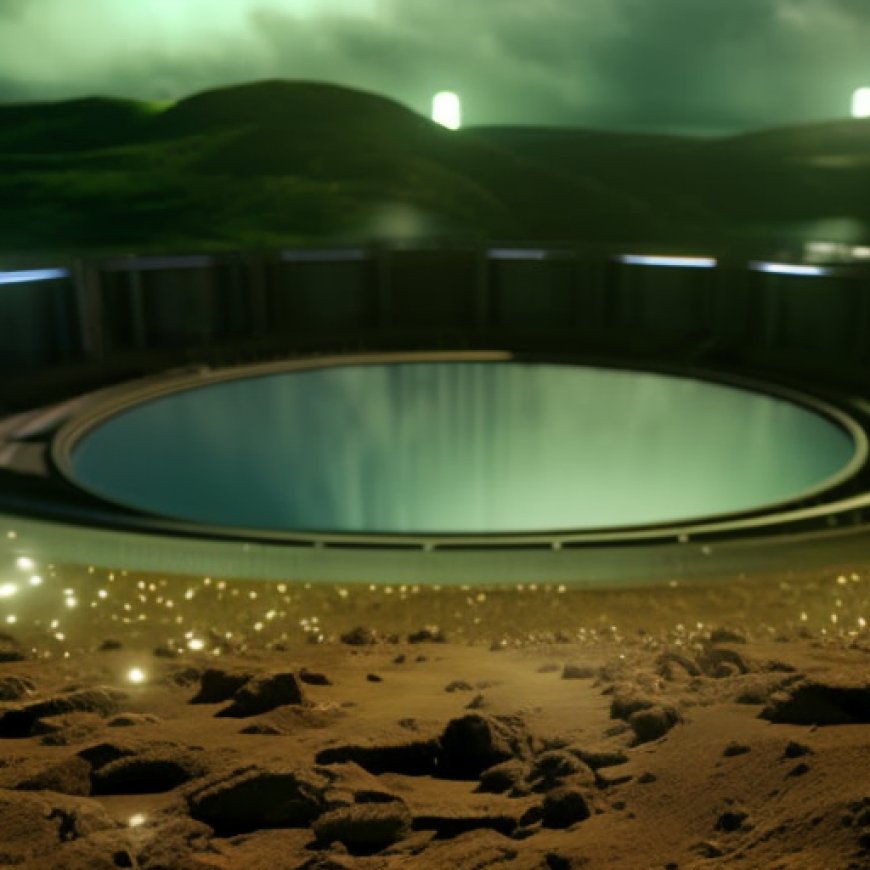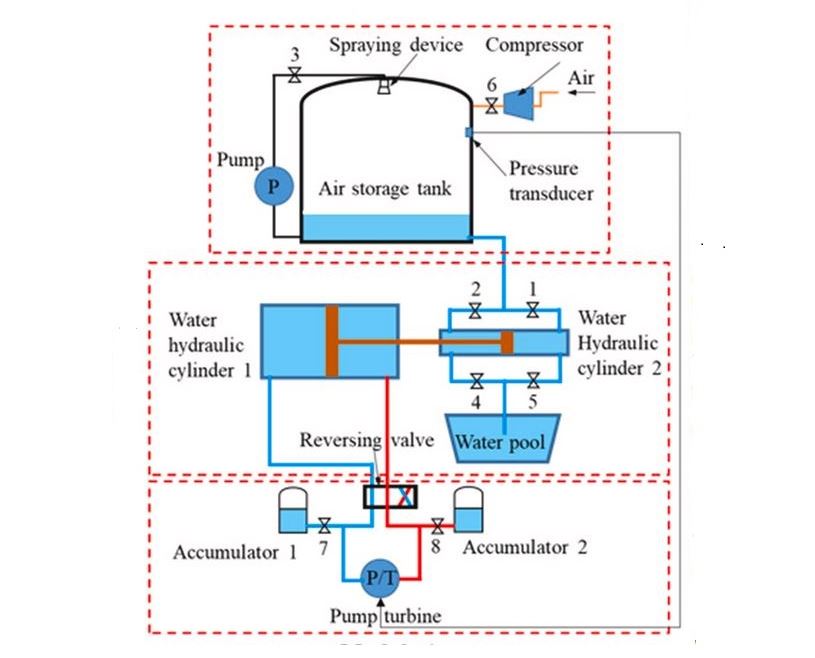Integrating pumped hydro with compressed air energy storage
Integrating pumped hydro with compressed air energy storage pv magazine International


A First Attempt to Integrate Pumped Hydro with Compressed Air Storage
May 8, 2024
Author: Emiliano Bellini

A group of Chinese researchers from the Harbin Institute of Technology has proposed a novel approach to address the issue of large head variations in pumped hydro storage systems. They have suggested combining pumped hydro storage with compressed air energy storage (CAES) technology.
In their paper titled “Energy and exergy analysis of a novel pumped hydro compressed air energy storage system,” published in Energy, the researchers explained the composition and operation principle of the proposed system. They also presented a thermodynamic model for each module and verified its correctness by comparing the results with existing literature data.
The system works through multi-cycle charging and discharging processes. It consists of a pumped storage unit, a reversing valve, a spraying device, water hydraulic cylinders, an air storage tank, a pump, a water pool, and several valves.
During the charging phase, water is extracted from the water pool using hydraulic machinery and then pushed into the air storage container for air compression. In the discharging phase, the air inside the container expands, and the water from the container is injected into the hydraulic machinery for electricity generation.
The proposed system enables energy storage and release through charging and discharging, allowing it to perform peak-shaving and valley-filling functions. It absorbs surplus electrical energy when the electrical load is small and supplies power to the grid when needed.
The system incorporates a spraying device to enhance heat transfer between the air and water in the tank, achieving near-isothermal compression and expansion.
Popular content
The researchers conducted simulations assuming a system capacity of 1 MW. They calculated a charging time of 31.1 minutes and a discharging time of 23.1 minutes.
The analysis showed that the water pressure potential energy transfer module in the system effectively converts the pressure variation in the air storage tank to a head variation during pumping and power generation. It also revealed that the pumped storage unit has the highest energy waste and requires further optimization to reduce system complexity.
In future studies, the researchers plan to reduce the number of energy transformations in the proposed system. They also aim to develop an experimental platform to verify the technical feasibility of the system and investigate the effects of key design parameters on its operational performance.
This content is protected by copyright and may not be reused. If you want to cooperate with us and would like to reuse some of our content, please contact: editors@pv-magazine.com.
SDGs, Targets, and Indicators Analysis
1. Which SDGs are addressed or connected to the issues highlighted in the article?
- SDG 7: Affordable and Clean Energy
- SDG 9: Industry, Innovation, and Infrastructure
- SDG 13: Climate Action
The article discusses a novel pumped hydro compressed air energy storage system that aims to address the issue of large head variations in hydraulic machinery. This technology contributes to the goals of affordable and clean energy (SDG 7) by providing a more efficient and sustainable energy storage solution. It also aligns with the goal of industry, innovation, and infrastructure (SDG 9) as it introduces a new approach to integrating pumped hydro storage with compressed air energy storage. Additionally, by enabling peak-shaving and valley-filling functions, this system supports climate action (SDG 13) by facilitating the integration of renewable energy sources into the grid.
2. What specific targets under those SDGs can be identified based on the article’s content?
- SDG 7.2: Increase substantially the share of renewable energy in the global energy mix.
- SDG 9.4: Upgrade infrastructure and retrofit industries to make them sustainable.
- SDG 13.2: Integrate climate change measures into national policies, strategies, and planning.
The article’s content suggests that the proposed pumped hydro compressed air energy storage system contributes to increasing the share of renewable energy in the global energy mix (SDG 7.2) by providing a more efficient and sustainable energy storage solution. It also aligns with the target of upgrading infrastructure and retrofitting industries to make them sustainable (SDG 9.4) as it introduces a new approach to integrating energy storage technologies. Furthermore, by enabling the integration of renewable energy sources into the grid, this system supports the integration of climate change measures into national policies, strategies, and planning (SDG 13.2).
3. Are there any indicators mentioned or implied in the article that can be used to measure progress towards the identified targets?
- Indicator for SDG 7.2: Share of renewable energy in the global energy mix.
- Indicator for SDG 9.4: Number of infrastructure upgrades and retrofits for sustainability.
- Indicator for SDG 13.2: Proportion of renewable energy integrated into the grid.
The article does not explicitly mention specific indicators for measuring progress towards the identified targets. However, the share of renewable energy in the global energy mix can be used as an indicator for SDG 7.2. The number of infrastructure upgrades and retrofits for sustainability can serve as an indicator for SDG 9.4. The proportion of renewable energy integrated into the grid can be an indicator for SDG 13.2.
4. Table: SDGs, Targets, and Indicators
| SDGs | Targets | Indicators |
|---|---|---|
| SDG 7: Affordable and Clean Energy | Increase substantially the share of renewable energy in the global energy mix (7.2) | Share of renewable energy in the global energy mix |
| SDG 9: Industry, Innovation, and Infrastructure | Upgrade infrastructure and retrofit industries to make them sustainable (9.4) | Number of infrastructure upgrades and retrofits for sustainability |
| SDG 13: Climate Action | Integrate climate change measures into national policies, strategies, and planning (13.2) | Proportion of renewable energy integrated into the grid |
Copyright: Dive into this article, curated with care by SDG Investors Inc. Our advanced AI technology searches through vast amounts of data to spotlight how we are all moving forward with the Sustainable Development Goals. While we own the rights to this content, we invite you to share it to help spread knowledge and spark action on the SDGs.
Fuente: pv-magazine.com

Join us, as fellow seekers of change, on a transformative journey at https://sdgtalks.ai/welcome, where you can become a member and actively contribute to shaping a brighter future.







